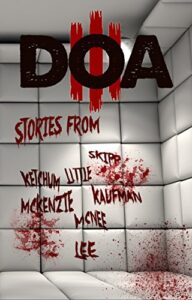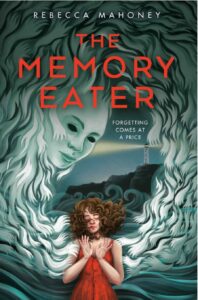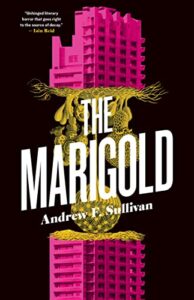D.O.A. III: An Extreme Horror Anthology edited by S.C. Mendes
Blood Bound Books, 2017
ISBN: 9781940250267
Available: Paperback, Kindle edition
Buy from: Amazon.com
The tagline on the back cover of the book reads: “You’ll laugh, you’ll cry, you’ll vomit.” And, they aren’t kidding. This is one of the most extreme collections ever published: 30 stories of raunchy, sex-driven, blood-drenched mayhem. The stories are good, just prepare for revulsion. This is for true hardcore lovers only– keep the kids away from this one.
The book’s pedigree is impressive, as Edward Lee, Jack Ketchum, Wrath James White, Bentley Little, and Richard Matheson are among the authors represented. The stories are generally entertaining and well-written. If there’s a theme, most of the stories involve horrible people doing horrible things to each other. No joke: there are some VERY ugly torture sequences in this book that make Eli Roth films seem like Disney movies. There are some stories with a paranormal bent, which helps keep the book from getting too one-dimensional. The originality is decent, although not to the level of the Welcome to the Splat Club series. As we’ve come to expect from Blood Bound Books, there is an undercurrent of dark humor threaded through many of the stories, which helps balance out the overall story mood. Notable stories worth mentioning include:
“Hostile” is only four pages, but it is comedic genius. Jeff Strand’s hilarious twist on the Hostel movie series proves that the worst situations can be amusing, when written correctly.
In “Taking Root”, a virulent strain of plant spores has contaminated Earth, turning people into… plants, of a sort. Two survivors find that, unfortunately, an apocalypse still doesn’t change peoples’ predatory instincts, or their bad nature. Despite sounding grim, it’s a light-hearted take on doomsday writing. Plants growing out of a person’s rear can be funny!
In “Ritchie”, Jackson killed Ritchie the bully when he was a kid, but Ritchie has a bad habit of coming back from the dead once a year. So, Jackson has to kill him, again. And again, and again. The fun part is, Ritchie’s injuries from each death carry over year to year, and he becomes less intimidating to the point of hilarity… but Ritchie may still have a trick or two up his sleeve…
It’s worth mentioning that this isn’t ‘peek under the bed and close the curtains out of fear’ horror writing. These aren’t scary, and aren’t meant to be. This is straight-up extreme splat writing to the max.
Bottom line: if the members of Cannibal Corpse and GWAR decided to write short stories instead of lyrics, then DOA III is probably what you would get. Recommended for hardcore fans only.
Reviewed by Murray Samuelson







Follow Us!